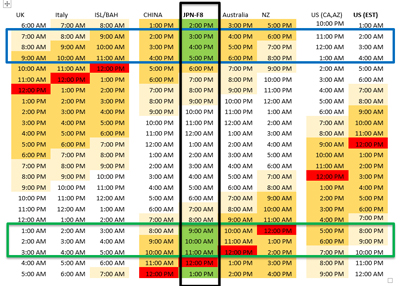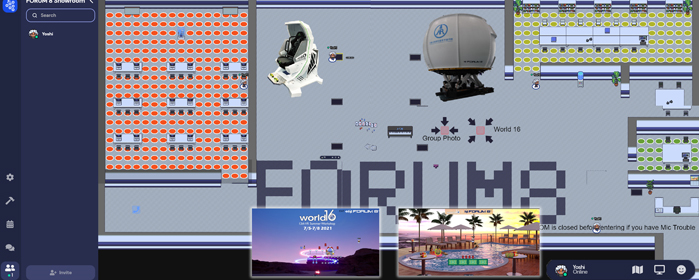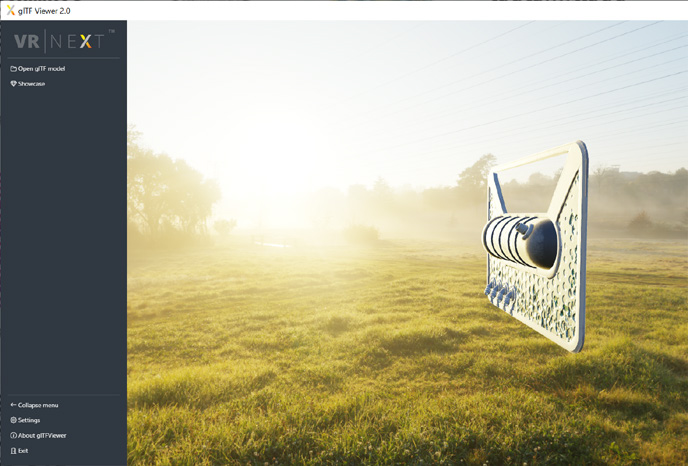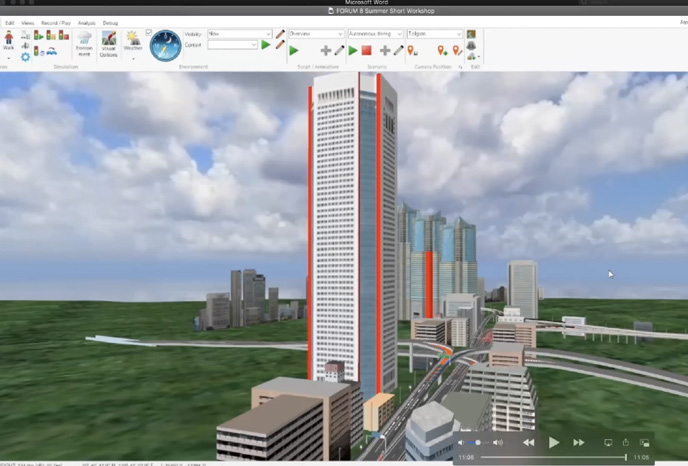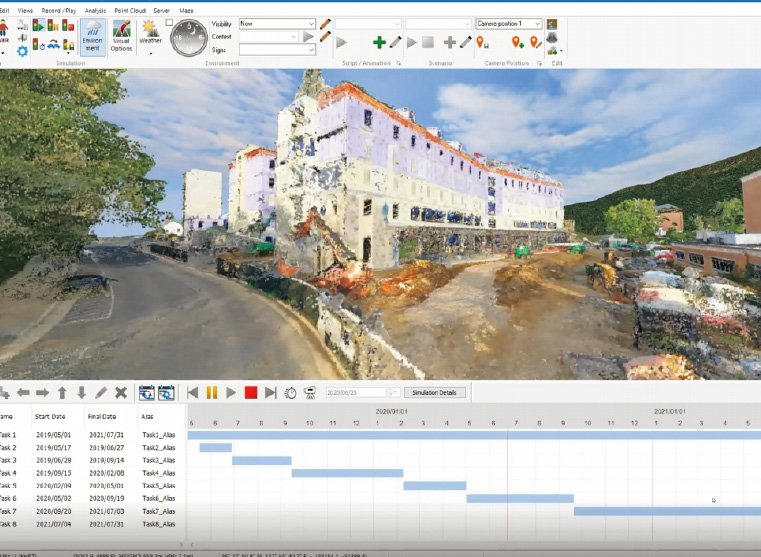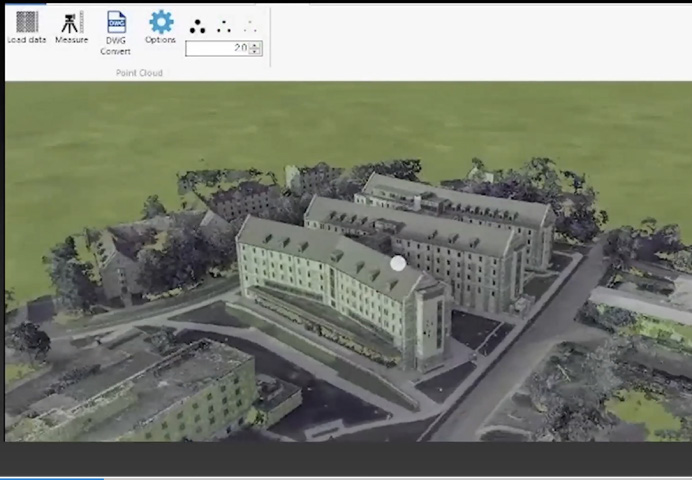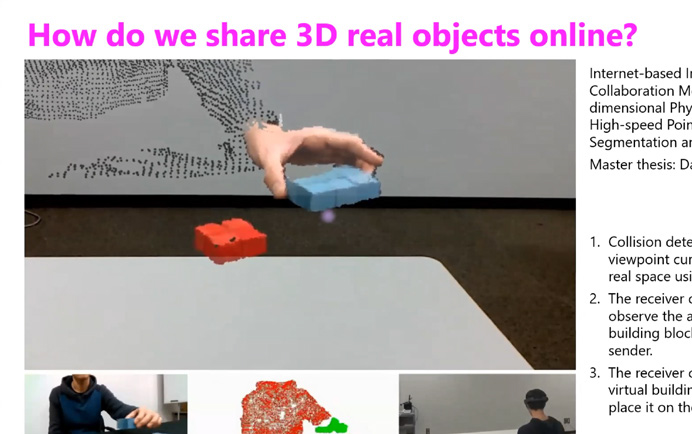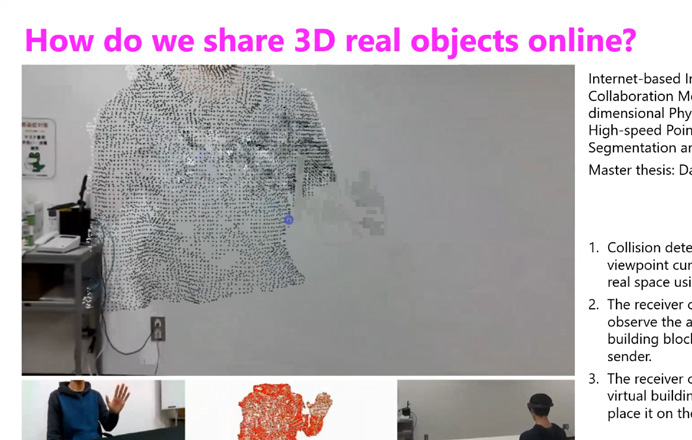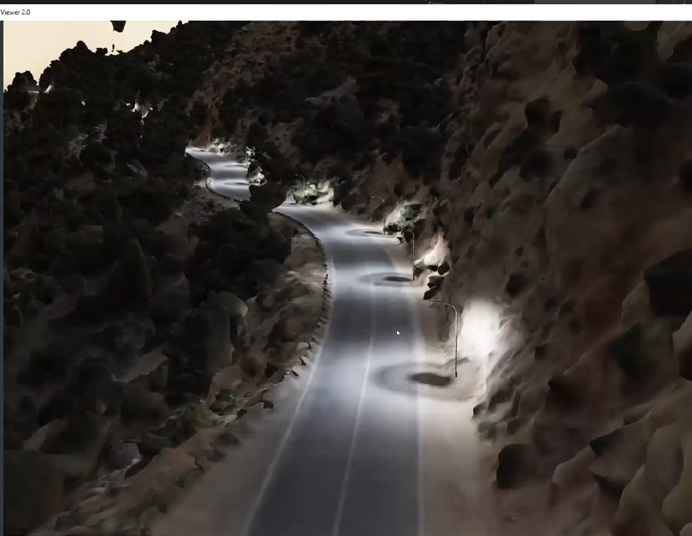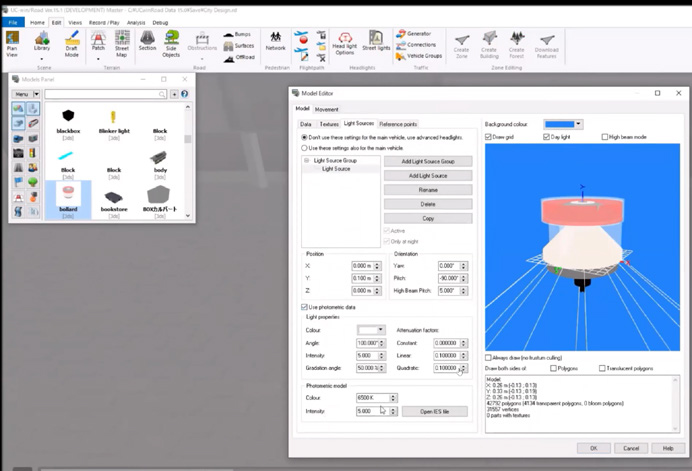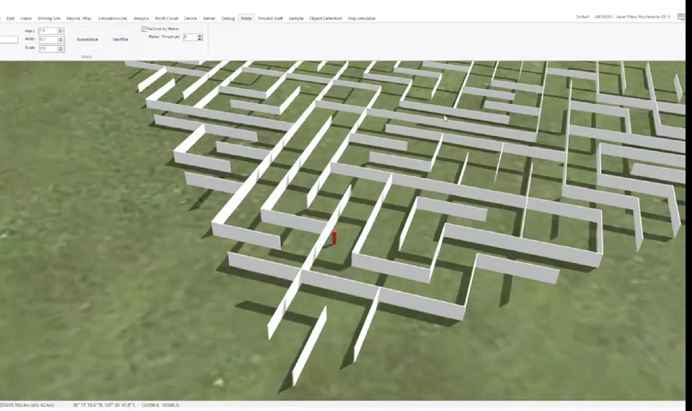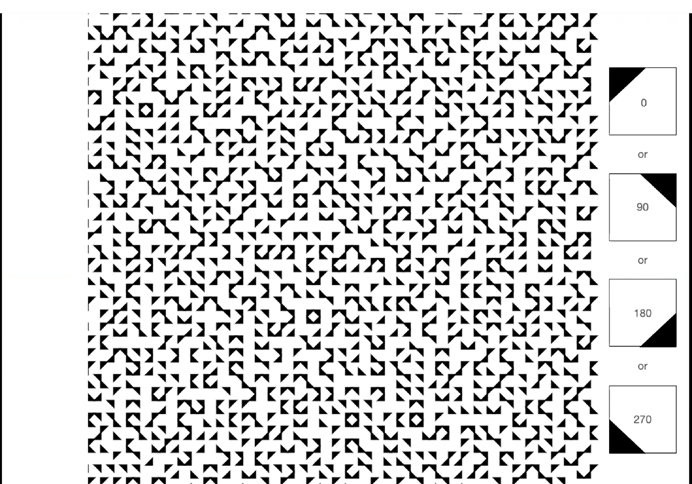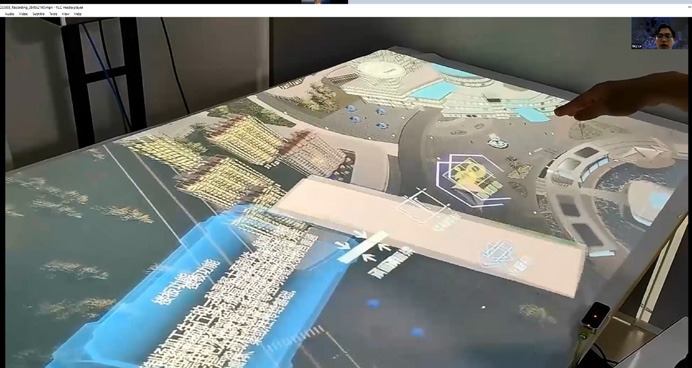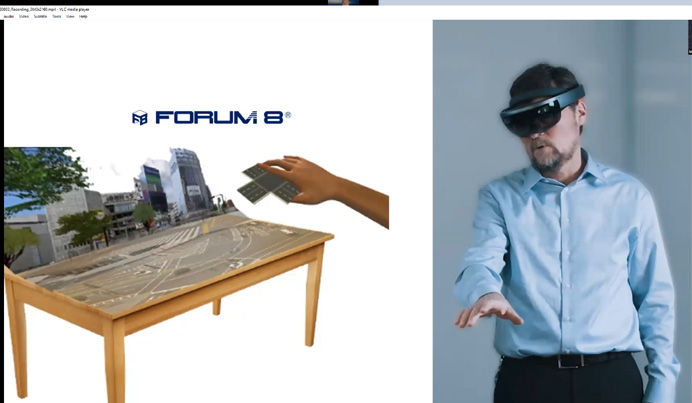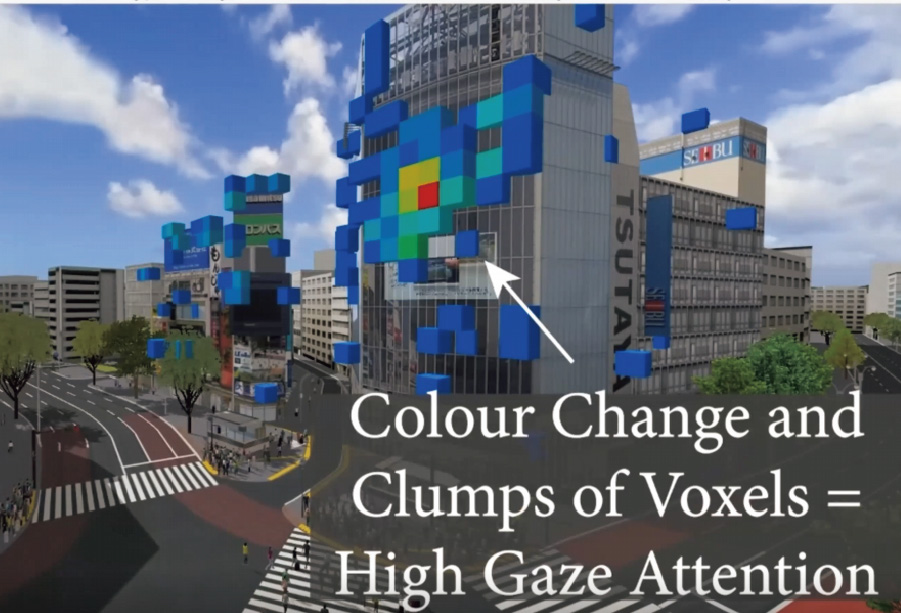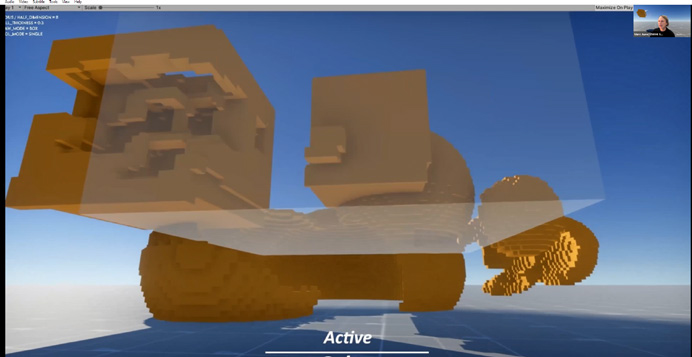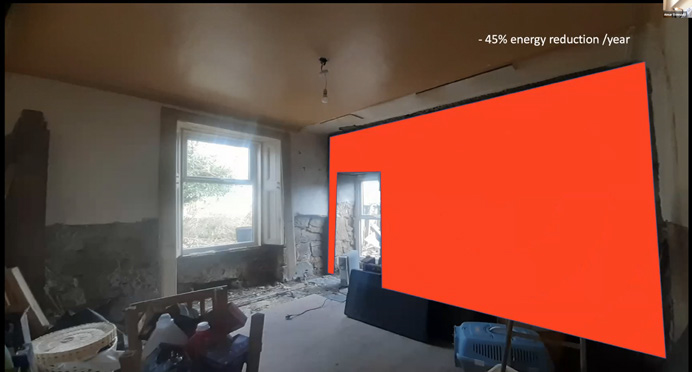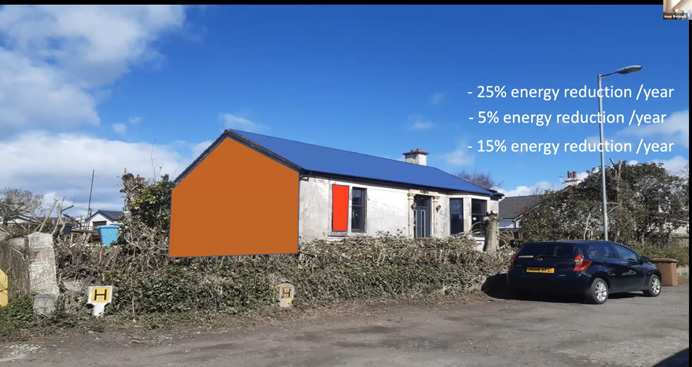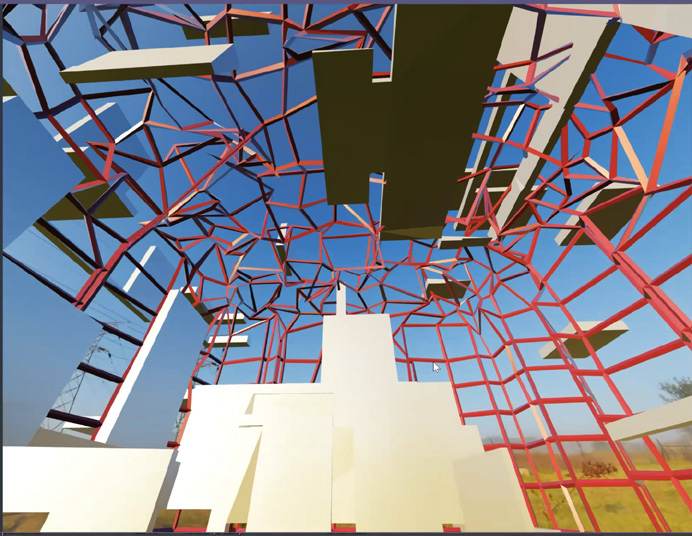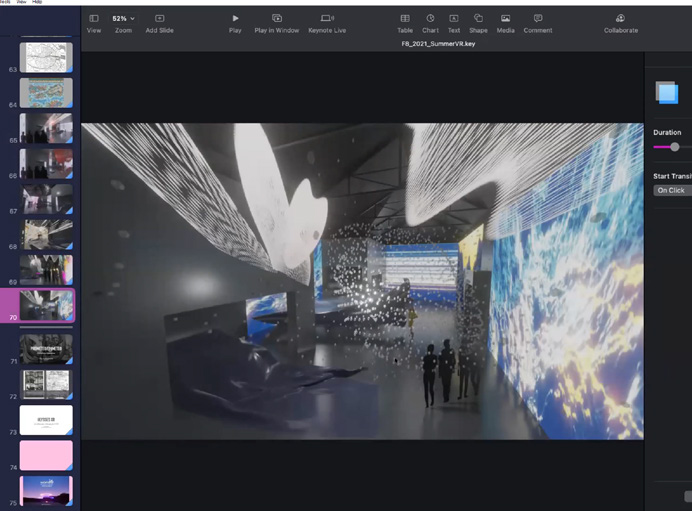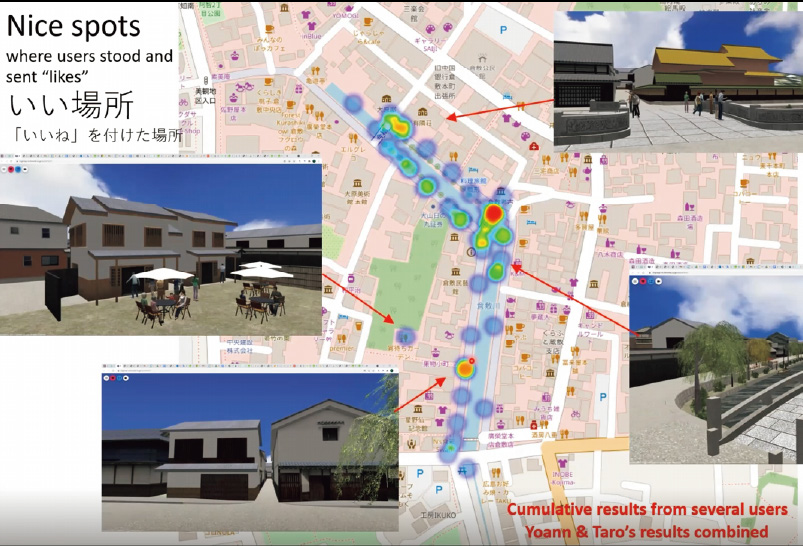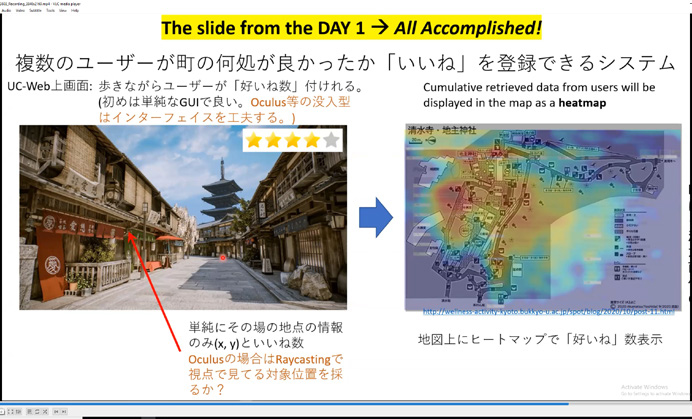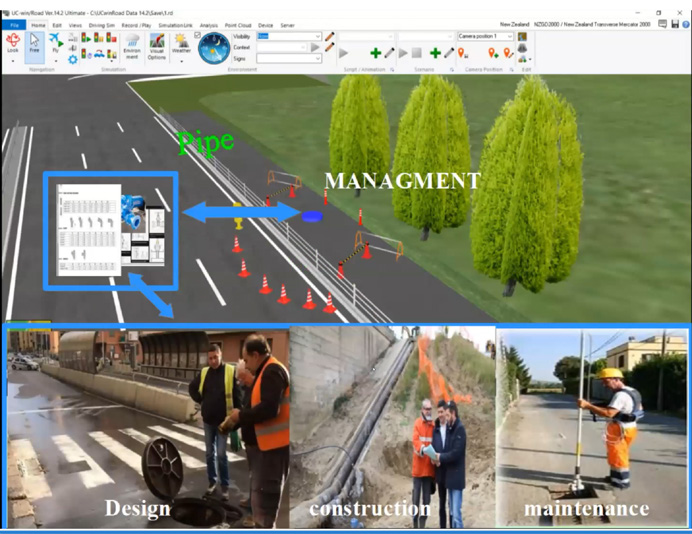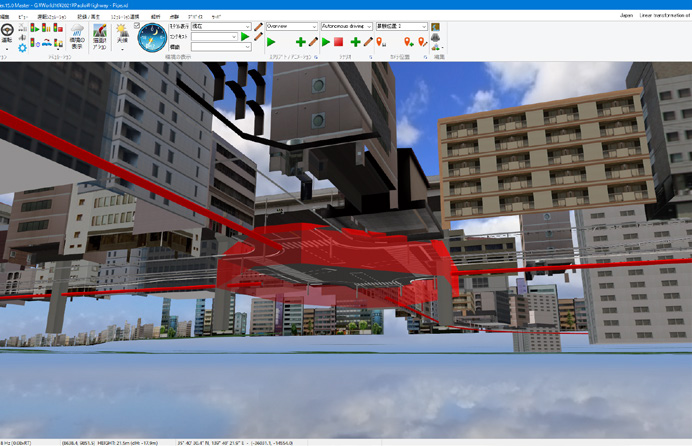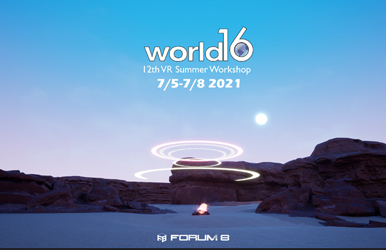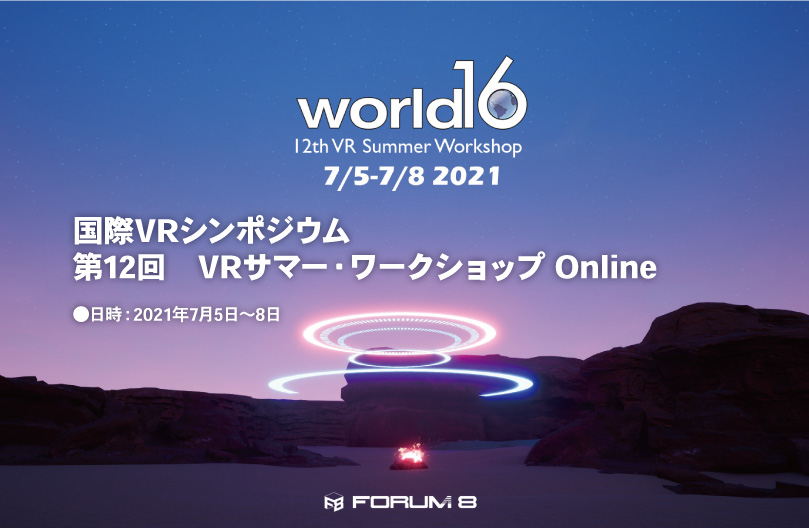
This is a report of the 12th VR Summer Workshop. Since the first time, we have held it in various cities around the world, but due to the corona disaster that has not yet converged, it has been an online remote and virtual conference for the second consecutive year.
In this workshop, World16, academic experts (university professors and researchers) selected from various countries and regions around the world, and developers engaged in practical work at a company (FORUM8) propose technologies that pioneer future innovations and actually develop prototypes. The World16 members are mainly engaged in research and development of visualization and simulation of urban models using VR, and in the Summer Workshops, they promote knowledge sharing and joint development by using a common platform (FORUM8's VR Design Studio UC-win/Road). So far, the workshops were held in Arizona State University, the U.S. (2008), Hakone, Japan (2009), University of California, USA Santa Barbara (2010), University of Pisa, Italy (2011), Hawaii, USA (2014), Thessaloniki, Greece (2015), Osaka University, Japan (2016), MIT, the U.S. (2017), Victoria University of Wellington, New Zealand (2018), and Paris, France (2019).
Remote work is spreading rapidly around the world, and the future where VR technology is more commonly used seems to be approaching. In this workshop, there were several discussions on the use of VR city models in cloud environments, which we will check here.
The biggest problem with remote international events is the difficulty of scheduling due to time differences. From last year's experience, we recognize that pre-meeting is important for remote collaboration such as workshops. Therefore, one month before the workshop, we had held meetings with each World16 member to discuss the outline of their project and the target scope that can be done in the 48-hour workshop. We also talked with FORUM8 development managers and asked them to plan grouping considering which developers to be assigned to each project. In the actual workshop, we tried to reduce time pressure by increasing free time.
The opening session of Day 1 (starting at noon on July 4th, Japan time) began with the opening remarks by Yuji Ito, FORUM8 President, and Pencreach Yoann, the company's development manager, gave us updating information of UC-win/Road and the development case for the previous year. In particular, I think that the integrated cloud service called F8VPS (FORUM8 Virtual Platform System) is a technology that will be attracting attention in the future. In addition, an interface for easy schedule arrangement in UC-win/Road and the support of C++ development using Visual Studio, Microsoft's programming environment software, are also great advantages. Afterwards, the FORUM8 award employees presented their results.
After the opening session, each member of World16 proposed and presented their projects. Since the suggested contents were modified a little from the pre-meeting, the team formation looked relatively smooth. Due to the time difference, members in the East Coast of the United States did presentations from 9:00 a.m. on Day 2.
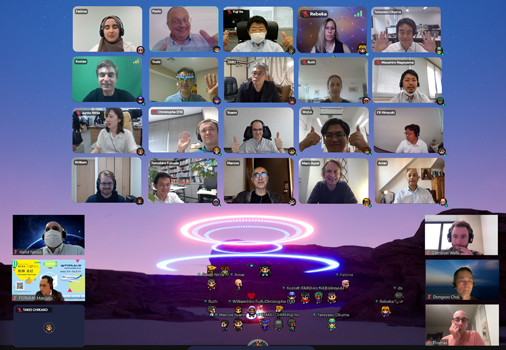
For the Day1 opening and Day4 result presentation, we used an online meeting tool called ZOOM as we did last year. On the other hand, we used a chat system called Slack <slack.com> also as before. We created a channel for each project, where we exchanged messages and files. It was easy to manage when many projects work separately. Apart from Slack, we also prepared a service called Gather.Town <https://gather.town/> for a chat during development. On a retro 2D game-like interface, we can have conversations with several groups within the participants, allowing for individual meetings (including chat sessions). There is also a function to create a separate room like a dungeon of 2D games. We gathered in the photo room and took a commemorative photo of the participants.
After the 48-hour workshop, all members made presentations on the last day at 1:00 p.m. on July 8th. The followings are the review of the projects, including a summary of each project and my personal impressions.
Professor Thomas Tucker from Virginia Tech has been working on the development of an interface that seamlessly manipulates VR and real spaces in recent years. He is trying to expand the possibilities of VR by creating the same objects as in the VR space with digital fabrication technology such as 3D printing and electronic work, switching the attributes (colors and textures) of models existing in the VR space, and generating scents in real time. This time, he verified it with glTF format data using a new tool of FORUM8 called VR-Next®.
▲ Prof. Thomas Tucker (Virginia Tech) SCENT +VR
Prof. Dongsoo Choi from Virginia Tech is engaged in point cloud data collection and analysis for archaeological research projects and is interested in developing 4D point cloud data tools over time. This time, he proposed the development of tools to measure distance, area, and volume from point cloud data. Since he needed a little more time to develop its interface, he tested the 4D linkage of point cloud data to point out problems and propose optimization.
▲ Prof. Dongsoo Choi (Virginia Tech) Volumetric & Surface Calculation Using Point Cloud in UC-win/Road
Prof. Tomohiro Fukuda from Osaka University reviewed the online VR environment and products currently in use rather than actual tool development, and worked to compile a roadmap for future development. Real-time sharing of 3D point cloud data, which was particularly focused, is likely to be a major contribution to Concurrent Collaboration Design in a long-standing research. He also summarized the requirements for FORUM8's F8VPS. Personally, in a VR space where many people participate at the same time, I think a function that allows sketching directly in 3D space would be helpful.
▲ Prof. Tomohiro Fukuda (Osaka University Graduate School) VR Online Platform Towards More Realistic Online Meeting
Rebeka Vital, a professor from Shenkar College of Engineering, Design and Art in Israel, proposed the IES file import function for lighting simulations. She, a professor in the Department of Architecture, developed a tool to interactively verify how night lighting changes depending on the type of outdoor light, and she actually demonstrated it at her presentation. It is a project that can be expected to become a product tool that can be used when proposing road lighting plans.
▲ Rebeka Vital (Shenkar College of Engineering, Design and Art) Integrating Street/Road Lighting tools into UC-win/Road
Prof. Kostas Terzidis from Tongji University in China proposed monozukuri education through programming training and AI technology for elementary school students as part of the education program called Kids AI held at the university. Specifically, he has developed a tool to randomly generate mini-game mazes in a simple scripting language within UC-win/Road. It includes operational difficulties in whether it can be an output which children can continuously keen on, but I think it is a very challenging project.
▲ Mr. Kostas Terzidis (Tongji University) Kids AID
Following last year, Professor Sky Lo from The University of Harbin in China has developed a system that integrates building models used on the table and AR, VR, and MR technologies. This time, he tried to integrate a system between UC-win/Road and other controls and camera equipment through FORUM8's newly developed template for Visual Studio. We expect the linkage with many tools and build of real-time systems through cloud in the future.
▲ Sky Lo (Harbin University) Interractive Reality for UC-win/Road
Professor Mark Aurel of the University of Victoria, New Zealand, developed interfaces to create complex designs using only eye control. It is not a new concept, but as we can see from that it has not been realized yet, a stable input system may require a lot of trial and error and fine tuning. We may also need to assist with voice and hands because it may not be possible to respond with the line of sight alone.
▲ Mark Aurel (University of Victoria) EVES
The research topic of Prof. Amar Bennadji from Robert Gordon University in the UK is to reduce the energy consumption in architecture. This time, using the new 4D function of UC-win/Road, he visualized the construction process for low energy residence in VR. He will develop learning tools that can be used in his university classes. If it can be linked with point cloud data which he has developed for a long time, it will be able to edit and display the construction process in real time on the actual point cloud data.
▲ Prof. Amar Bennadji (Robert Gordon University)
Japan-UK collaboration resarch projact Augmented reality in Buildings Energy Improv
Marcos Novak, a professor at the University of California, Santa Barbara, is studying on multimedia arts and is also looking for ways to express reality and information using a variety of VR and MR technologies at Venice Biennale. In this workshop, he tested the FORUM8's new VR-NEXT tool and proposed the development of a media server that simultaneously links multiple computers, projectors, lighting equipment, sound systems, etc. in real time. He also plan to control them on cloud so that they can be used regardless of hardware or software, and he also introduced product tools for that purpose.
▲ Marcos Novak (University of California) Media Field Navigation and VR-NEXT
Professor Taro Narahara from the New Jersey Institute of Technology proposed the development of a tool to collect learning data from more users necessary for AI study that he has involved in the past few years. Specifically, he developed a tool to record the location information (where the user is standing and looking at) in cities and buildings, and a function to display the frequency of recorded locations on heat map. By using a cloud environment in the future, learning data for artificial intelligence will be created, and it will be available for urban redevelopment and problem pointing.
▲ Prof. Taro Narahara (New Jersey Institute of Technology) Thumbs Up Rating System for City-scale VR Models
A research topic of Professor Paolo Fiama from the University of Pisa, Italy, is the construction engineering using BIM. In the workshop, he proposed a simple creation tool and management system for underground equipment (especially pipes). A problem related to the data management of the underground pipes is that the status of pipes is unclear until they are dug. Since adjustments and modifications are often made at construction sites, a tool to make at least simple updates to VR data and modifications immediately is required in addition to drawings and databases. It seems that it would be a very useful tool if the tunnel linking function of the current UC-win/Road is improved to support pipe generation.
▲ Prof. Paolo Fiama (University of Pisa) To model deep work in progress
Nowadays, the shift to remote work is being promoted due to the corona disaster, and people want to use technologies such as cloud environments and artificial intelligence more easily. In particular, in the field of construction and civil engineering, it seems that there is an urgent need to develop environments, services, and tools so that collaboration works can be carried out smoothly between research institutes such as universities, companies responsible for industry, and local administrative agencies. The projects proposed and prototyped in this workshop will continue to be developed. We are planning to present the results at the VR Symposium of the Design Festival to be held in November. We are looking forward to your participation.
The State of the Art Technologies Expression Association, which FORUM8 cooperates with, is also planning to hold certification tests related to cloud and artificial intelligence, where participants can learn the basic knowledge and technology. If you are interested, please contact us.
Every time, we make posters related to the venue of the workshop. Since this is the second remote event, we created an image of the remote work of the future. The workshop is always held at night in my area (Arizona, USA), because it is held in the convenient time for the FORUM8 developers in Japan. Therefore, I created a 3DCG image of future that allows us to work remotely while camping in the great nature of Arizona. In the future of advances in technologies such as VR and AR, I want to work while operating the spatial interface of the campsite. On the last day, I created another image of the rising sun, with my wish for the end of the COVID-19 and a bright future.
(This is the translation of the article written by Yoshihiro Kobayashi)
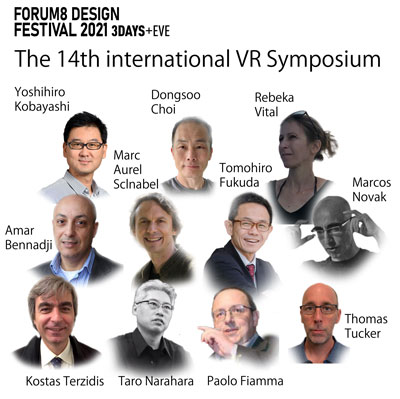
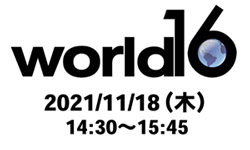
A lot of presentations and discussions about VR utilization have been made at the International VR Symposium. Advanced research and development, and the results of development of packaged products realized through collaboration between World16 and FORUM8 will be presented at the Design Festival DAY2.
(Up&Coming '21 Fall issue)
